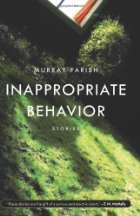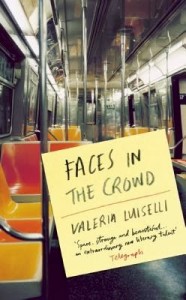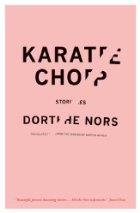Tin House Summer Writer’s Workshop: A Review

This summer, a great and wonderful circumstance led me to the Tin House Summer Writer’s Workshop. Hosted by Tin House and housed on Reed College campus in Southeast Portland, Oregon, this workshop was the miracle I didn’t know I needed. It was the kick in the pants I didn’t ask for. Most of all, it was deeply touching, intellectually stimulating, and rife with endless seeds of inspiration!
Okay, I’m gushing clichés. But seriously, stick with me while I lay out the excellence which was #THWW14.

I had the honor of participating in Kevin Young‘s Poetry workshop with eleven other poets. We ranged in age from 20 to 44 and came from all over the U.S.: Indiana, L.A., Florida, Albuquerque, Washington, Maryland, North Carolina, N.Y.C., Portland, OR., et cetera. We had six days of two-and-a-half hour workshops, and each day we workshopped two poets, each for an hour. In the remaining time, Young took requests. We wanted to know… everything: How to begin publishing seriously? What makes a good title? How does one improve & develop his/her writing process? And he obliged, graciously. However, what was so affirming about asking these questions was being in a room with other people who were wondering the same things I was. Furthermore, since the group was diverse and generous, we were able to offer each other heaps and heaps of advice, recommendations, and encouragement.
The community that we developed in the workshop classroom extended out onto the campus and throughout the rest of the week. As is always the case, I learned just as much chatting with my colleagues over lunch and in between lectures as I did during workshop. This was aided by the environment and atmosphere which were carefully crafted and supported by Tin House.
In addition to the workshop, each day held multiple opportunities for stimulating discussion and cross-genre consideration through lectures, seminars, and readings. This year’s faculty included: Matthew Zapruder, Mary Ruefle, Kevin Young, D.A. Powell, Jo Ann Beard, Nick Flynn, Robert Boswell, Dorothy Allison, Jonathan Dee, Anthony Doerr, Ann Hood, Kelly Link, Antonya Nelson, Dana Spiotta, Wells Tower, Joy Williams, Rachel Kushner, and Sarah Shun-lien Bynum. And several special guest writers and editors made themselves available, also through seminars, lectures, one-on-one sessions, and readings. I attended lectures by: Lacy M. Johnson on the Chronology of Memoir, Bianca Stone on Ekphrasis and Poetic Comics, Ann Hood on How to Write a Kick-Ass-Essay, Jo Ann Beard on transfiguring the Personal into the Universal, Kevin Young on the Hoax Poem, Matthew Zapruder on “the meaning” of poetry, D.A. Powell on silence in poetry, and Mary Ruefle on the Imagination. Actually, I’m getting a little hot and bothered just thinking about the innovation and intensity of these conversations! These writers questioned me in ways I wasn’t ready for, and also on matters that I desperately needed to be challenged in. Obviously, I cannot speak highly enough of my experience with the Tin House Summer Writers Workshop, but I also have to acknowledge that it’s not the only opportunity of its kind.
There are countless workshops, conferences, retreats, and residencies for writers each year, and each one offers a unique setting for creative exploration and development. Tin House’s workshop emphasizes networking and highlights the most current arguments and trends in Creative Writing. Other workshops and residences are more interested in creating a laboratory for the writing process. Still others offer interdisciplinary opportunities and even collaboration with other artists in residence. How wonderful and endless. Or, how overwhelming! If you’re thinking about pursuing an intensive writing experience, I suggest Poets & Writers’ database. (The Association of Writers & Writing Programs [AWP] also has a search engine, but I find it more difficult to navigate.) And you might think about asking yourself a few of the following questions as you vet your options:
What is my creative focus right now?
Do I have a specific project in mind?
What stage am I at in my process or project?
Do I need time & space for writing or revision? Or both?
Am I looking for feedback? What kind of feedback (peer, faculty, publisher)?
What is my budget?
What is my timeframe? What season would work best for me? How much time can I devote to this experience?
Clearly, there’s much to consider. And much to be gained. There’s more I’d like to share from my experience, but in the interest of readability, let’s call it a day. Tune in next week for “The Goods,” where I spill the beans about what Kevin Young, and other writers, think everyone should read.
What We’re Reading: Faces in the Crowd

Faces in the Crowd by Valeria Luiselli (Coffee House Press, 2014)
A mother in contemporary Mexico City writes a novel about her past. A young translator living in New York City, obsessed with the poet Gilberto Owen, finds traces of him in Harlem and on the subway. Owen loses weight, loses sight, and is slowly disappearing in 1950s Philadelphia, dreaming of his past and his prime in New York City.
Luiselli’s first novel (translated by Christina MacSweeney) tells a story of love and loss. Her writing blurs the line between life and death across three narratives that overlap in content and time, leaving much up for the reader to accept or dismiss as reality.
We read the novel that the unnamed (and unreliable) narrator in Mexico City is writing about her youth in New York. We are introduced to the eclectic acquaintances who pass through her otherwise nearly empty apartment with keys she’s given away. We watch her follow the Gilberto Owen’s past and convince her boss at a small publishing house to publish translations of Owen’s poems.
As she writes in Mexico City, she claims the novel is a “horizontal novel, told vertically”, or perhaps a “vertical novel told horizontally”; she tells her young son it’s a ghost story. Her husband asks questions about the book, revealing that she has imagined some pieces of her past, leaving it to the reader to decide what to believe is fact or fiction, who is a ghost or who is a living memory.
Eventually, Gilberto Owen joins as a narrator, and while he’s disappearing in Philadelphia, he’s remembering his past in New York City, He sees a young woman with sad, tired eyes, often on a subway train running momentarily parallel to his. Then one speeds up, and they’re no longer locked in synchronicity. This image is repeated from the perspectives of both Owen and the young translator, who impossibly meet each other at the same time and place.
The narrator reflects:
The subway, its multiple stops, its breakdowns, its sudden accelerations, its dark zones, could function as the space-time scheme for this other novel.
The stories and memories span nearly 100 years and take place in New York, Philadelphia, and Mexico City for all narrators, unhinging the reality of time and place that we understand. If you’re able to let go of that reality and follow the story the way it wants to be told, you’ll fall into the pages and believe the connections between people—ghosts or not—to be true.
At times I had to re-read pages to be sure I knew who was speaking, and most importantly, when they were speaking. Luiselli crafts her narrations to flow so seamlessly together that sometimes the last word spoken by one will be the first spoken by the next. Certain objects reoccur in many scenes, from the narrator’s red coat that Owen catches her in, to the dead tree he left in his Morningside apartment that she later discovers and attempts to revive.
The female narrator lives with the dead tree at her writing table. Based on the narratives overlapping in different time periods, you might start to believe the unreliable narrator when she says she’s writing a ghost story. She happens to find comfort in death:
In a way, I was living in a perpetual state of communion with the dead. But not in a sordid sense. In contrast, the people around me were sordid… The dead and I, no. I had read Quevedo and internalized, like a prayer, perhaps too literally, the idea of living in conversation with the dead. I often visited a small graveyard a few blocks from my apartment, because I could read and think there without anyone or anything disturbing me.
The narratives inch closer and closer together, until they meet in the same present, which was satisfying after feeling them slowly connect, piece by piece. Through the carefully crafted sentences that make up each intriguing shift in narration, the novel ends up telling just one story (where space and time are irrelevant): a story about poetry, mortality, memory, and about writing a story, the themes of which appear slowly—then all at once—in each perspective.
How does a story change when time and place are no longer relevant? When reading a novel with unreliable and shifting narrators, what can you gleam as “truth” for the story, when in our reality it’s all truly fiction?








